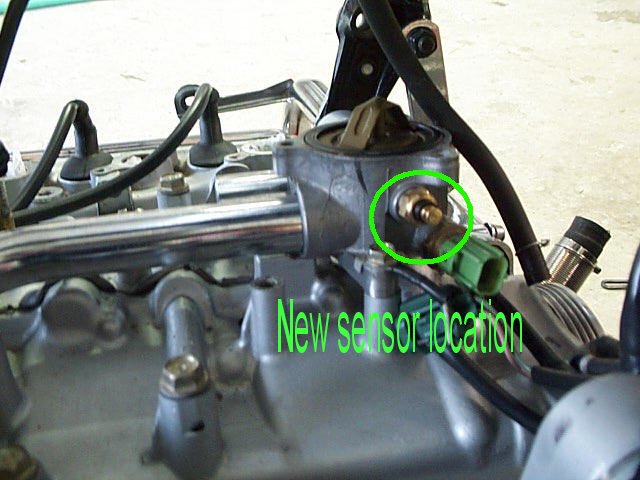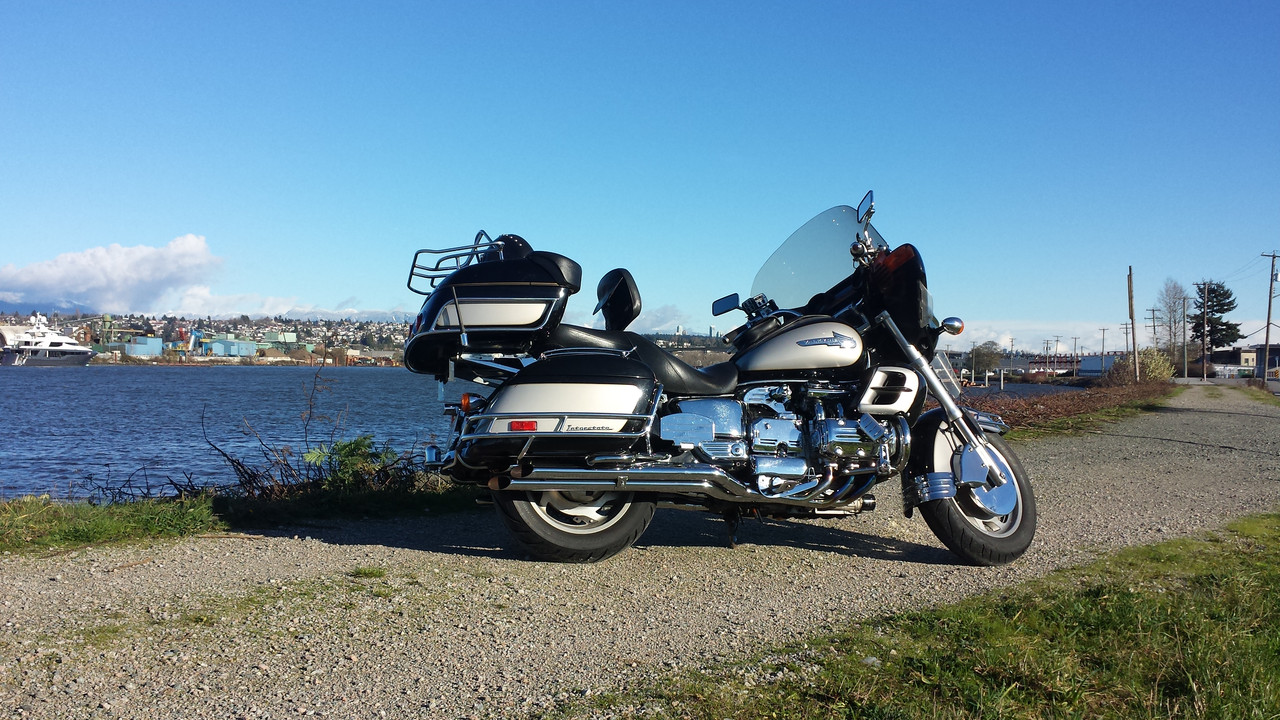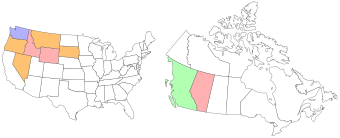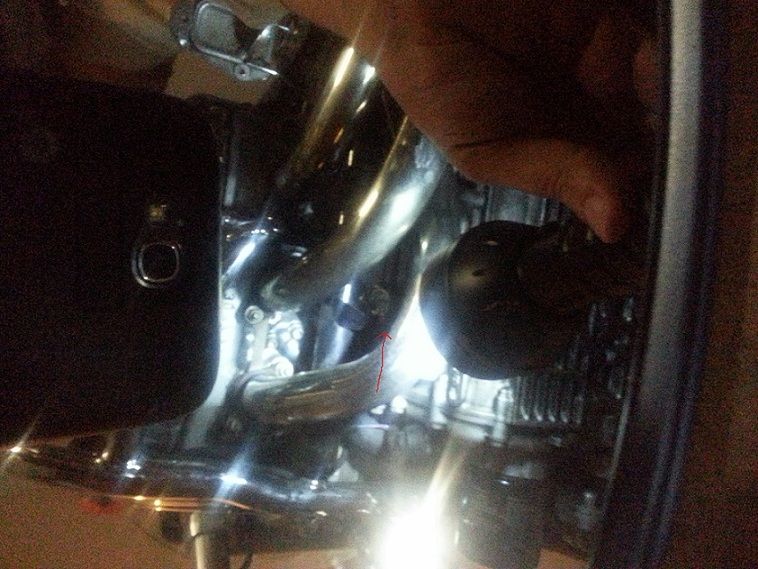|
sdv003
|
 |
« on: December 09, 2015, 08:33:24 PM » |
|
All the thermostat info I could find on the board dealt with the bike running hot. I think I have the opposite problem. It's gotten cool here and what I'm seeing on the temperature gauge isn't making total sense to me. First, the setup:
98 Tourer, new to me in March '15 (meaning I have no cold weather experience with it). It seems as if it was well maintained by the PO. Motosens water temp transmitter and gauge. Fan kicks on when gauge indicates 210* and cools down to something around 195* where it turns off. I think that tells me that the gauge is providing reasonably accurate temperature readings. Ambient temperature in the morning is approx 40*.
I start the bike and drive about 4-5 minutes to the freeway. Temp hasn't come off the peg (120*) yet, which isn't a big surprise. I have an 10 minute run on the freeway. At that point, the temp is off the peg, but not very warm. It's maybe 140*. Once off the freeway and back on the slower surface streets, I'll get to maybe 160* if I don't get stopped at a light. It will get up to 180 or 190 if I catch a long light, but goes back down to 160 once I get going again.
In short, it runs colder than I expect on the freeway and I get rather large swings in temperature fairly quickly once it warms up. All my experience with thermostats is with cars, but they seem to do a good job of holding a temperature, opening only enough to maintain whatever temp they are designed for. It seems like either the thermostat is stuck open (at least partially) or it's a rather cool thermostat that is full open around 150-160 and air movement on the radiator dictates what temp I get.
My question is: Am I seeing normal operation? If not, what do you suspect is a problem? What tests would you recommend at this point?
Thanks in advance.
|
|
|
|
|
 Logged
Logged
|
|
|
|
|
sandy
|
 |
« Reply #1 on: December 09, 2015, 09:05:55 PM » |
|
Check where in the engine is the sender located? Some senders are in a port under the engine which doesn't read the hottest water. RP might chime in with a photo to demonstrate.
|
|
|
|
|
 Logged
Logged
|
|
|
|
|
98valk
|
 |
« Reply #2 on: December 10, 2015, 03:32:26 AM » |
|
That is normal.
this is an all aluminum engine. aluminum dissipates heat much faster than cast iron. This engine was designed to be fully enclosed in body work with side mounted radiators. The Goldwing also used water heated intake manifolds which I think was computer controlled.
so cold ambient temps it will run cold.
I use various radiator blocks to maintain at least 180+F. when the temp is 35F and below the rad is blocked 90%. 35F-50F shorter rides 50% longer rides 25%. above 55F usually no block, depends if short or long ride. If I miscalculate, I pull over and remove blocks. % blocked #s are all approximate.
Engine wear is greatly increased when water temp is below 180F.
I've post this before and posted the stock thermo specs. the thermo is a high flow unit and starts to open just under 180F.
|
|
|
|
|
 Logged
Logged
|
1998 Std/Tourer, 2007 DR200SE, 1981 CB900C 10speed
1973 Duster 340 4-speed rare A/C, 2001 F250 4x4 7.3L, 6sp
"Our Constitution was made only for a Moral and Religious people. It is wholly inadequate to the goverment of any other."
John Adams 10/11/1798
|
|
|
Gryphon Rider
Member
    
Posts: 5232
2000 Tourer
Calgary, Alberta
|
 |
« Reply #3 on: December 10, 2015, 08:41:39 AM » |
|
Where is the sender mounted for your gauge? I know some use an adaptor spliced into the upper radiator hose. If the thermostat is closed, the temperature in the hose will be cooler than the temperature at the engine because cooler ambient air will cool the hose faster than the engine, and thus temperature indicated will be lower than the actual engine temperature. Then when the thermostat opens, coolant flowing from the engine will quickly raise the indicated temperature. When I run my Valkyrie in cold temperatures (near freezing) on the highway, the indicated temperature is around 160 or 170. My sender is mounted directly in the thermostat housing, which I think is the best place for a true engine temperature indication. I put my sensor in the same place Jeff K did. The photo is from here.  |
|
|
|
|
 Logged
Logged
|
|
|
|
gordonv
Member
    
Posts: 5766
VRCC # 31419
Richmond BC
|
 |
« Reply #4 on: December 10, 2015, 04:43:57 PM » |
|
I know a stuck open thermostat will do that same thing.
But like already mentioned, look at where the sensor is located first.
Is it the sensor or the thermostat? Who knows till you check it all out as the others have mentioned. If you had access to the thermostat, I would say remove it, and test it's heat range (a thermometer and a pot of boiling water).
|
|
|
|
|
 Logged
Logged
|
1999 Black with custom paint IS   |
|
|
|
Firefighter
|
 |
« Reply #5 on: December 10, 2015, 07:11:06 PM » |
|
I think this is normal also. If I read correctly, according to your numbers your fan was about to turn on at the long traffic light, sounds right to me. My IS indicates alot cooler on cold or even cool days, but once I have warmed the engine up and come to a complete stop the fan will run in just a few minutes. If I start the bike cold and let it sit and idle it takes quite a while to warm up enough to have the fan run. Like others say, depends on where your temp sender is installed, and like any gauge, you have to learn where it's reading for different conditions so you will know where normal is.
|
|
|
|
|
 Logged
Logged
|
2000 Valkyrie Interstate, Black/Red
2006 Honda Sabre 1100
2013 Honda Spirit 750
2002 Honda Rebel 250
1978 Honda 750
|
|
|
|
sdv003
|
 |
« Reply #6 on: December 10, 2015, 08:14:30 PM » |
|
The sensor replaced one of the freeze plugs (I think its a freeze plug). In this case, it is the one that is on the right side of the bike above the bend in the exhaust pipe for the forward cylinder. It was a real b***h to put in since I didn't remove the exhaust. Here is a lousy picture. I took a picture of the bottom of the bike from a mirror on the floor.  I would think that location would give a reasonably true indication of temperature, but I really don't know. Even though the block is aluminum, I wouldn't have thought it could dissipate that much heat, though CA makes a good case for it. I like the idea of a radiator block. I think I'll experiment with that. CA - what do you use to block the airflow? |
|
|
|
|
 Logged
Logged
|
|
|
|
|
98valk
|
 |
« Reply #7 on: December 11, 2015, 08:56:06 AM » |
|
The sensor replaced one of the freeze plugs (I think its a freeze plug). In this case, it is the one that is on the right side of the bike above the bend in the exhaust pipe for the forward cylinder. It was a real b***h to put in since I didn't remove the exhaust. Here is a lousy picture. I took a picture of the bottom of the bike from a mirror on the floor.  I would think that location would give a reasonably true indication of temperature, but I really don't know. Even though the block is aluminum, I wouldn't have thought it could dissipate that much heat, though CA makes a good case for it. I like the idea of a radiator block. I think I'll experiment with that. CA - what do you use to block the airflow? search on here about that location of the sensor. I tend to remember a few posts about the difference on temp vs the t-stat location. to check your gauge, the ICM puts in additional advance when cold until engine temp is approx 160F. when u notice or hear rpms drop a little at idle it should be at that temp. I use a stair tread, http://www.homedepot.com/p/Sterling-Brands-Bullnose-Black-9-in-x-24-in-Stair-Tread-6320032/205847353easy to cut, thin to slide in btwn guard and rad and curved on end to hook the guard. I just cut different sizes to add to each one to gain the % I want. |
|
|
|
|
 Logged
Logged
|
1998 Std/Tourer, 2007 DR200SE, 1981 CB900C 10speed
1973 Duster 340 4-speed rare A/C, 2001 F250 4x4 7.3L, 6sp
"Our Constitution was made only for a Moral and Religious people. It is wholly inadequate to the goverment of any other."
John Adams 10/11/1798
|
|
|
|
sandy
|
 |
« Reply #8 on: December 11, 2015, 04:22:11 PM » |
|
With the engine cold in the AM, remove the radiator cap and start the engine. There should be no water movement in the fill hole. If there seems to be movement, the T'Stat is partially stuck open.
|
|
|
|
|
 Logged
Logged
|
|
|
|
Gryphon Rider
Member
    
Posts: 5232
2000 Tourer
Calgary, Alberta
|
 |
« Reply #9 on: December 11, 2015, 05:23:45 PM » |
|
With the engine cold in the AM, remove the radiator cap and start the engine. There should be no water movement in the fill hole. If there seems to be movement, the T'Stat is partially stuck open.
I suggest removing the cap and removing some fluid before starting it. If the rad is completely full and the t'stat is open, I think you'll get spillage from the coolant being pumped out the upper rat hose into the rad. |
|
|
|
|
 Logged
Logged
|
|
|
|
|

